| Lista Light |  |
Last months of November to March 2010
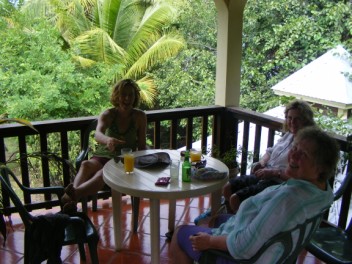
After a long barren stretch of visitors by nil, slowly, stealthily, they began arriving. First came my Mum and God Mum, Sue, in mid November, arriving amidst the chaos of a new mast with stays dangling in mid-air and piles of wood and scatterings of nails strewn about the deck ready to impale. Never-the-less the Land girls stepped aboard into the greenhouse, brewed cups of tea and regaled us with home chatter. We frog marched them through dry scrub woodland, up hills and down to wee coves and had Mum plunging into the not too desirable sea. Gifts rained down upon us, with Dave advancing from one fetid pair of swimming trunks to a full suite of 7 colourful beauties. Other similarly thoughtful and wonderful treats appeared, until the real treats of the show disappeared as quickly as they had alighted.
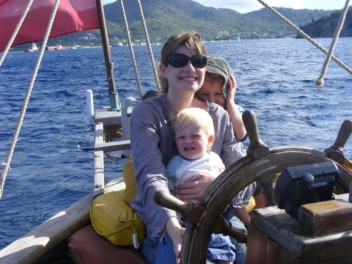
Then Ross, Vicky, George and Max stormed into our lives with an army of colouring books, imaginary games, snorkelling, running, 'Happy Feet’ and giggles. Max, whom Dave and I had only formally met as Vicky’s ‘bump’, would twitter and chirrup to himself from behind a big toothless grin, while Georgie would invent the most dramatic fishy stories, with a cast of gnashing Barracudas and sly pirates. George definitely stole the show with a number of heart-stopping stunts, incoudinga :a headlong dive down a sheer flight of steps in Carriacou to a concrete-stitched-chin ending; procuring a stack of stones in his bottom and very sore eyes. Indeed, some of the most lasting comments of the stay were voiced by the poet himself; when Uncle Dave had tenderly cooked a tagine for the young hooligan, he responded with, responded with, <'>That’s not tasty, that’s not even a little bit tasty<'>. What can one say? The other beauty was when sailing to Carriacou, 'Mummy, I’ve got hot breath'. After which a torrent of sick was unleashed. From that day onwards, seasickness will forever thus be labelled... 'Hot breath!'.
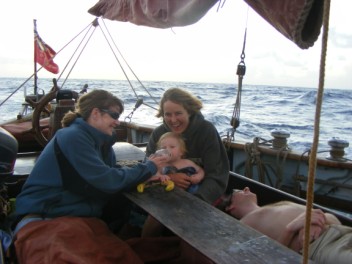
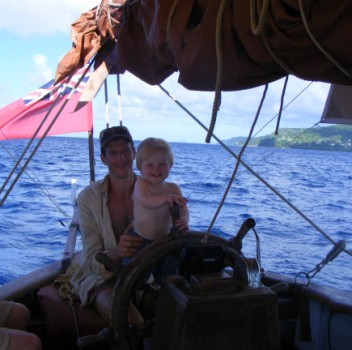
On Christmas Eve, Jake and Martha arrived replete with homemade stockings, Christmas bunting for Lista and a Devon flag. We sailed to Isle de Ronde, north of Grenada and became acquainted with the practice of sundowners. We ate like Kings: homemade bagels, bread, lasagne, curries and vintage wedding cake. A Hawksbill Turtle turned up, quietly grazing the Turtle Grass under Lista and then a Sting Ray, gliding effortlessly through the water. We swam ashore to find coconuts and attempted to reach the lagoon on the other side of the island, but after being squewered and pricked relentlessly by the barrage of vegetation and insects, we turned back at the peak of the hill and back aboard Lista for Carriacou.
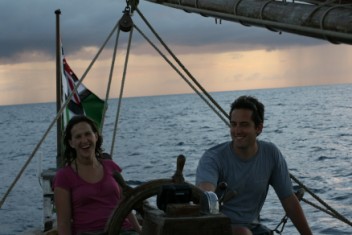
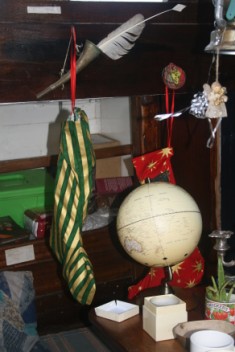
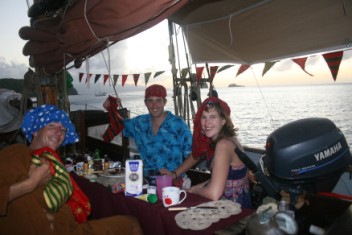
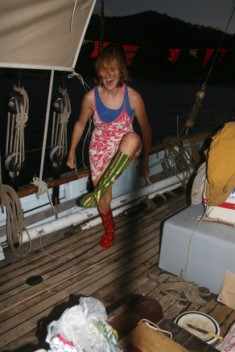
With Jake and Martha we were able to start the second round of seabird surveys, so we set off for some of the most brutal islands where their seamanship would be most valued. First was Battowia, one of the main contenders for the Queen of the seabird islands in the Lesser Antilles. True to form, towering sets of waves piled around her cliffs threatening to engulf our dinghy as we attempted to find a break through the surf to board her craggy cliffs. Oblivious to the crashing waves and strong currents, Magnificent Frigatebirds perched like lines of waiters in the gully before us, whilst Brown Boobies wheeled in the sky above us, until a particularly bold individual would come to check us out, nearly cart-wheeling into the water as he craned his neck to take a look at the oddest shaped, featherless birds.
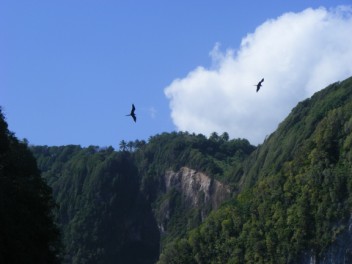
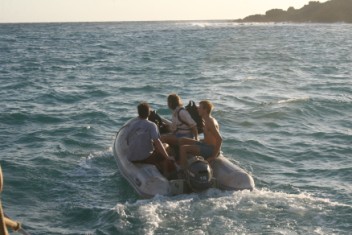
On the island, Red-footed Boobies were busily gathering sticks for their nests or pinching off their neighbours. Others were sitting on eggs or a fat, white, fluffy chick. Chicks peered down at us form their precarious nests, whilst parent’s sat tight, though some beaks were certainly a little out of joint from the intrusion. The Red-footed Booby colony is magnificent, likely the largest in the Lesser Antilles. Its residents spill into the seas around the island, furnishing them with colour and interest.
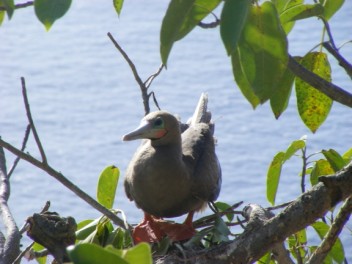
There are plots to develop this last seabird bastion; hopefully they are fictitious rumour mongering. The islands very geography should render such suggestions ridiculous. The other hazard which is real, however, is harvesting of seabirds. This archaic practice still continues, yet seabird numbers are believed to have declined by at least 10 times since man first colonised these islands (based on historic texts and archaeological evidence from seabird middens) and cannot sustain it. Traps, fishing lines weighted down with plastic bottles, hanged from the trees where the boobies nested and frigates roosted, a dead bird hanged ensnared. The remnants of a booby meal was found, tens of boobies had been taken. To date, we have only found three decent Red-footed Booby breeding colonies in the whole of our Lesser Antilles study area on Battowia, Les Tantes and Diamond Rock, all in the Grenadines. The problem is that local people viewing these splendid colonies may believe the birds are numerous, yet beyond these precious sites...lie empty islands.
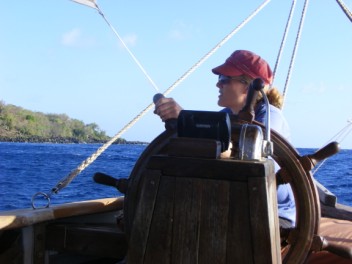
Soon came Fiona and runs up and down the hills around Hog Island, as well as a hash along the rugged southern coastline of Grenada. All manner of Caribbean fair arrived on the table from chillied coucou (Caribbean for mealie meal, sudsa, ngoli, nshima etc). to banana bread. We dissected the outreach strategy and began a multi prong approach to wage war on the interests of Caribbean youth, with seabirds the victory shield. Seabirds were to be constructed, quizzes created, stories told and objects identified. Seabirds are A-M-A-Z-I-N-G! Ultimately, wild woman cameraman of the year was born, alias Fiona and with our new, waterproof camera (the last slipped to its watery death somewhere near Isle de Ronde, should you be floating that way) we launched our next battle on the most ruthless seabird islands.
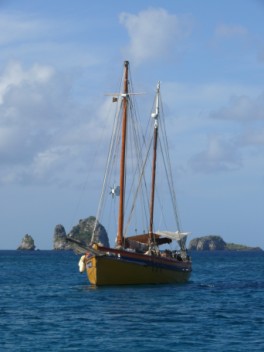
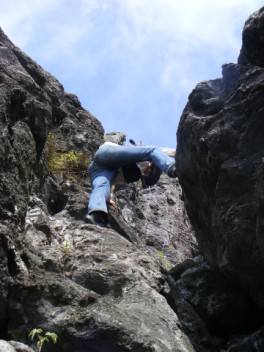
Back to Isle de Ronde, with Dave’s dinghy, raised from its salty coffin and kicked into action. The three of us stormed the islands North of Grenada, Les Tantes, Sisters and Diamond Rock, the rivals to Battowia’s seabird crown. Fiona, hot on our foot filming those amazing seabirds and the Lowrie duo. Needless to say, award winning footage was created and will be coming to a screen near you, should you linger too long or too close to our sights...
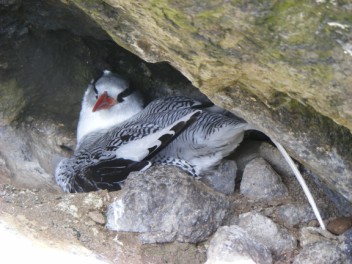
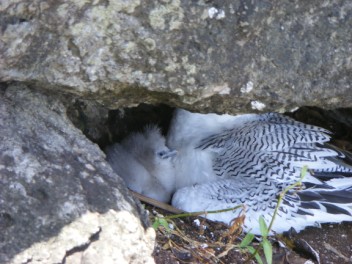
Along with Battowia, it was Diamond Rock that stole our hearts. An extinct volcano rising forthright from the sea, cheek by jowl to Kick-em-Jenny, which lurks below the surface. It is brutal, sheer, resplendent with Devil’s Nettle, acacia and cacti, but home to so many nesting seabirds. Brown Boobies watch over their single chick, Red-billed Tropicbirds reel and squawk and Red-footed Boobies nestle in the trees above.. and that is only when the migrant breeding hoards (terns, noddies and gulls) are not in residence. When they return chaos really does break out, with Laughing Gulls cackling, Sooty Terns gliding through the sky and Brown Noddies launching aerial attacks on any who wonder too close to their nest.
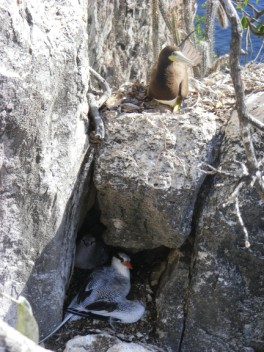
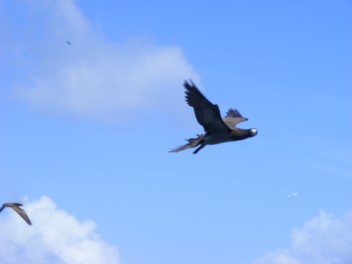
It was Diamond Rock, where one of the greatest spectacles, ‘a Blue Planet moment’ occurred. As we stood on the cliffs, countless Brown Boobies (of a magnitude we had not yet witnessed) circled above us in a huge gyrating flock. They would sweep past us, many examining us with their quizzical look, then descend in one magnificent dive en masse, before returning in their arch around us.
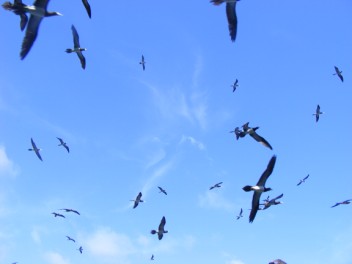
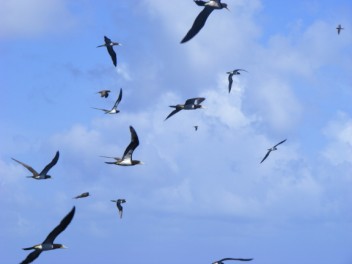
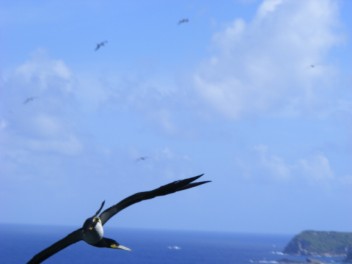
It was on Les Tantes, where one of the worst spectacles of our study materialised. The day before we had been surveying an easterly Tantes island and noticed a man on the main island with a bucket. The next day we landed on the main island to survey. Finally, we reached the spot where the man had been the day before and on the ground lay heaps of Brown Booby chicks’ heads and wings. Nearby was a discarded coke bottle and an abandoned tin of tuna. Brown Boobies, like many seabirds nest on the ground and like just about all seabirds, they have not adapted to mammal predators (there were none before man colonised their islands). They provide the most pathetic easy targets, their big, fluffy chicks staring up at the man before he swiped them and cut off their heads. The carnage continued around the island’s perimeter, with only a small handful of chicks remaining. There appeared no thought for the future, Brown Boobies will be wiped out from the island in a couple of years at such a rate of slaughter.
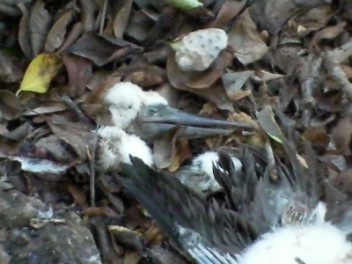
There is no tradition for this hunting, it is not ingrained in island culture, as the residents of the islands today did not arrive until at least the 1700s. The most obvious floor in the need to take seabird chicks, eggs or adults, is the abundance of food on the islands. Fruits and vegetables are hanging from the trees all year round. Kentucky Fried Chicken is the international dish. Obesity is spiralling out of control, even in the 1970s 22% of men and 58% of women were obese in the Caribbean. Today the average fat intake for individuals is 160% of the suggested daily requirement and for sugars, 250%. The average calorie consumption across the region is 2,800 kcals (Royal College of Physicians of Edinburgh and Royal College of Physicians and Surgeons of Glasgow, http://www.behindthemedicalheadlines.com/articles/obesity-in-the-caribbean).
Locals, eating their way through the last, dwindling stocks of wildlife on these islands, can hardly be justified. Heaps of dead iguanas cooked on open fires, turtles slaughtered, a Humpback Whale (that we had just seen breaching the day before- a spectacle neither of us had before been privileged to see) slaughtered using motor boats on Bequia (allowed due to apparent ‘aboriginal’ rights), sharks, dolphins and conches taken, lobsters speared, ever smaller fish species netted, fights breaking out over seabird egg harvesting rights etc. Yet no one appears bothered that all of the above is declining and on its way out, that at this rate there will be no more tuna to eat, or lobster to find, that under our watch species are slipping away.
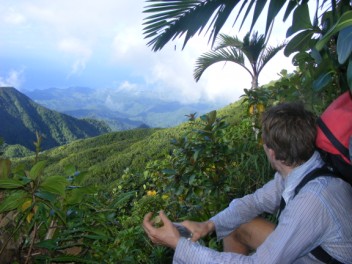
Now back to the visitors. After Fiona disappeared to her multi story snow hole in the glens of Scotland, we were variously visited by a number of guests, none of whom I recall Dave or I inviting? The first didn’t even bother to wait for Fiona’s departure, before steeling in behind the freezer one night. On returning from a survey we noticed a ticking. To numerous and stinking. No alarm clock appeared to be firing nor generator stuttering... finally the noise was isolated and the villain identified. A cicada! Of course! And just as it is thought lucky if a cricket decides to churr in your house, so we felt graced to have our new visitor, happily plucking his belly.
Next came a thud in the night ...Only moments before, all had been gently snored, to be awoken by a flop and a flap. Dave sat bolt upright ready to wrestle with bandits or the anchor whichever came first, but as he staggered to his feet he found no such foe, just a large and rather shocked fish! It had managed to leap from the water nearly 3m high to Lista’s bow and then perfectly and harmoniously synchro-glided its way through our 60cm wide hatch to the foot of our beds! In the morning all that was left of our guest was a fishy bouquet.
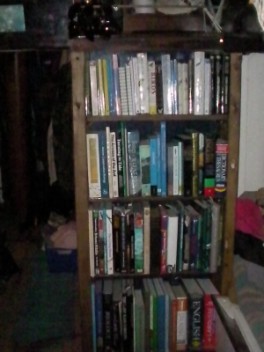
The most sinister of our uninvited guests were cockroaches. ‘Cockroach’ the word no yachtsmen likes to mention and scuttles away into a dark hole (just like the antagonist himself) on the mere splutter of the name. Indeed, the only reason I can now mention the aforementioned is due to the ‘were’ in the sentence, as nothing has scuttled across the sink for a very long time.
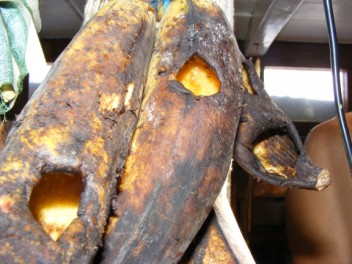
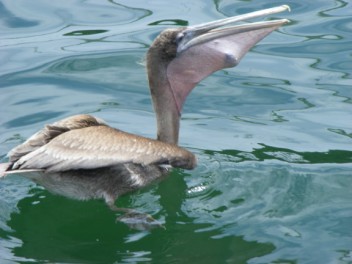
The winner for the most curious invasion arrived in Mustique. Dave and I awoke to droppings scattered all over and under the saloon table. Casting our investigations further, more were found on the bed, by the bed, near the galley work top... It was suggested by a very astute sister-in-law, ‘Are you sure your visitor wasn't just Dave getting up to pesky midnight antics?’ But, soon the mystery was further unravelled by Dective Land where on glancing up to the spoon rail she observed bananas with cavernous holes in them, no Lowrie could create such holes without an implement...? Or could he? Various suspects were muted as the perpetrator, but the criminal was only finally confirmed after chatting to an acquaintance who lives on the island and was complaining about the mess created by the resident bats! Frugivorous bats!!! That night we set out to catch the thieves red handed and armed with camera and banana we waited.. Before falling asleep. It was a night later, with the table once again resplendent with droppings that we returned to find the bats in our banana trap taking flying dining passes! These new guests were most welcome and would often flit past our bed as we read at night, happily entering or exiting through any hatch they stumbled across.
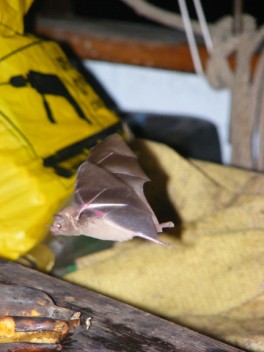
After the bats, all other guests paled. The earwigs were swiftly dispatched, the fish that mysteriously flew onto the kayak or Lista’s deck at night were returned to the sea. Until the birds arrived.. who were whole-heartedly hailed- and included, a brief appearance from a Brown Booby and then a Magnificent Frigatebird each alighting on our new mast and formally christening it. A juvenile Brown Pelican whom decided to take a break from fishing and sat for sometime preening and gazing into the distance, her beak dripping a constant stream of brine.
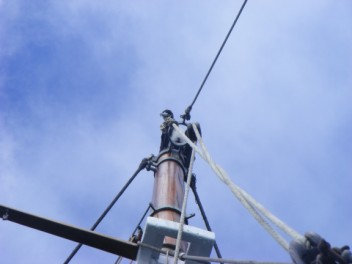
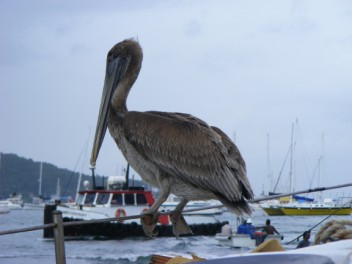
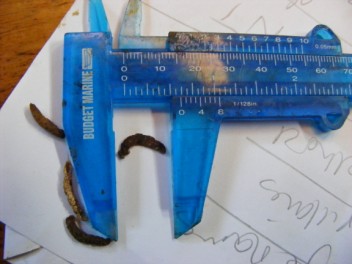
One more guest was to arrive, David Wingate from Bermuda. He is the same age as Lista Light and was the driving force behind rediscovering and re-establishing the once believed extinct Bermudan Petrel or Cahow. His seabird knowledge is phenomenal and Dave and I learnt of his quest to find other endangered petrels in the Caribbean and his long career of conserving seabirds and the natural world. With him we discovered Dominica in our efforts to find the Black-backed Petrel which is thought to still nest in the steep rainforest clad mountains of the interior. Dominica is stunning, it is called the nature isle of the Caribbean, long may it remain that way.
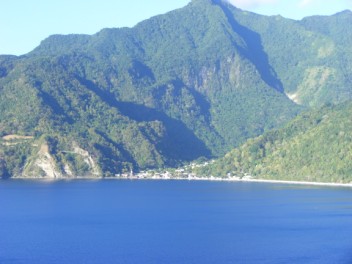
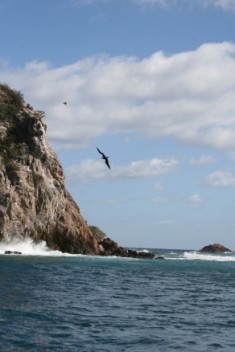
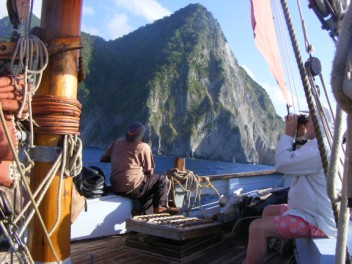
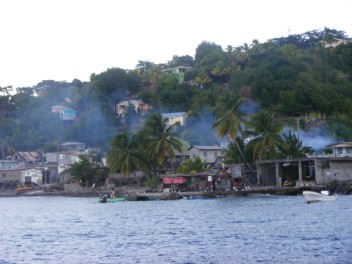
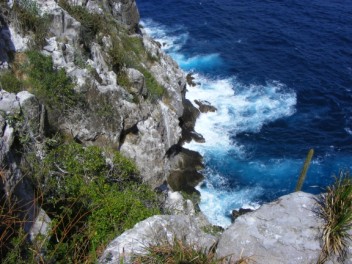
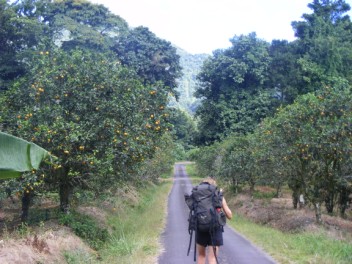
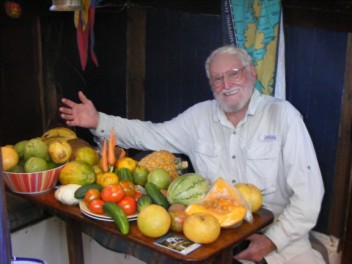
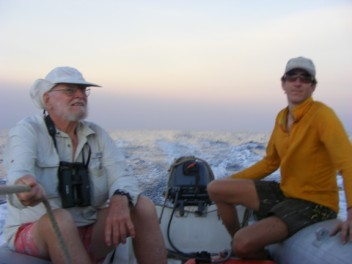
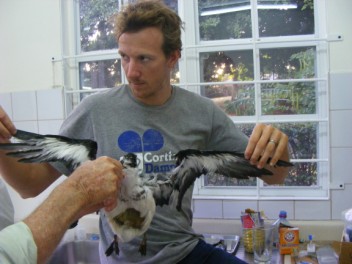
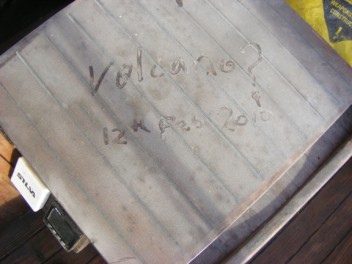
Whilst being visited we have been gathering data for the final seabird survey for each island in the Lesser Antilles. We have only three more months left of the study after which the three month write up of the Atlas will ensue. During the surveys a fiendish AUSH hound has emerged.. ‘AUSH’, being the acronym for Audubon’s Shearwater, the nocturnal seabird that breeds on islands in the Lesser Antilles, the whereabouts of, previous to our research was not known. This AUSH hound takes the form of a long, muscular individual, with the rare ability to scale cliffs and sniff our AUSH burrows, for the bird nests in cavities and holes on islands. No other AUSH hound have been recorded until today.. When it can be divulged that the hound is no other than David Lowrie himself... But what has made the surveys possible has been the addition of a decent dinghy, the first, Dave rescued from the graveyard, but now we have a proper super dooper dinghy through a grant from Rufford Small Grants Trust. This has enabled us to motor to islands quickly, using less fuel and with less danger than aboard Lista.
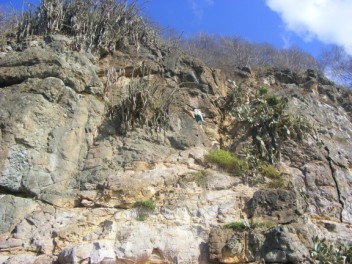
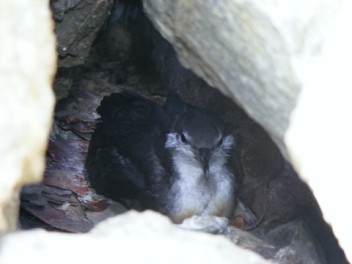
As well as collecting data, we have been presenting to schools, universities, NGOs and governments about seabirds, their threats and their future conservation. Dave has produced the film and we have ambushed schools: David transforming into a female Brown Pelican before the class, I have been flapping my wings in the telling of fishy stories, feathers have been thrust into paws, David has leapt onto cupboards to illustrate tree nesting while I lay my eggs on the ground. Our final onslaught was launching a poster competition asking, ‘Why are seabirds important?’ The Society for the Conservation and Study of Caribbean Birds (SCSCB) Bird Life International (BLI) and RSPB donated prizes for the three winning entrants and their schools, now we must just wait for the entries.......
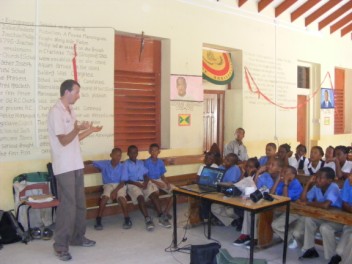
Back to previous section - July to December 2009
Forward to next section - April to June 2010
This page hit Count : 6449
This is the Lista Light Website, for the travels of the sailing boat Lista Light
Click here for text-version of site